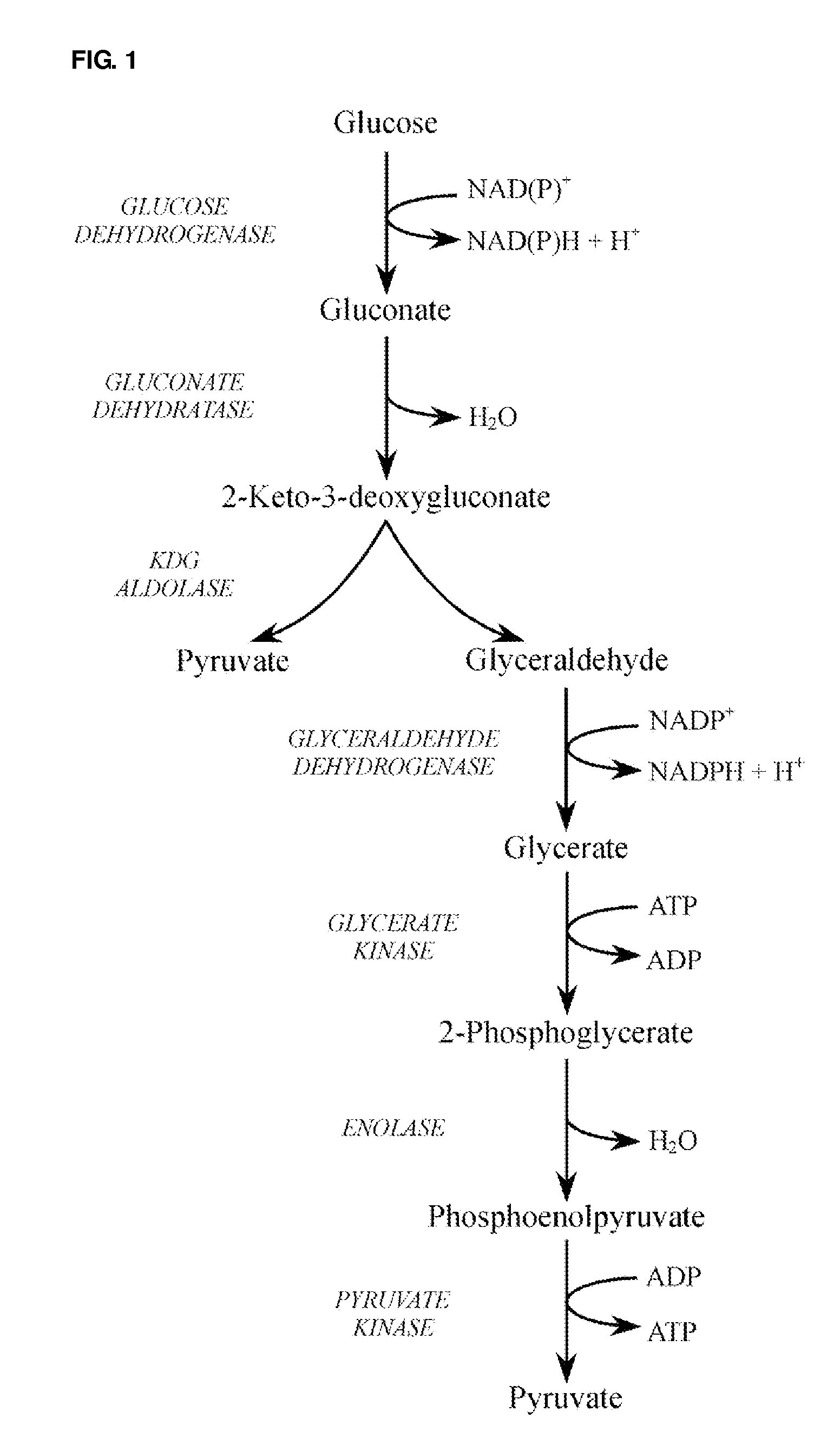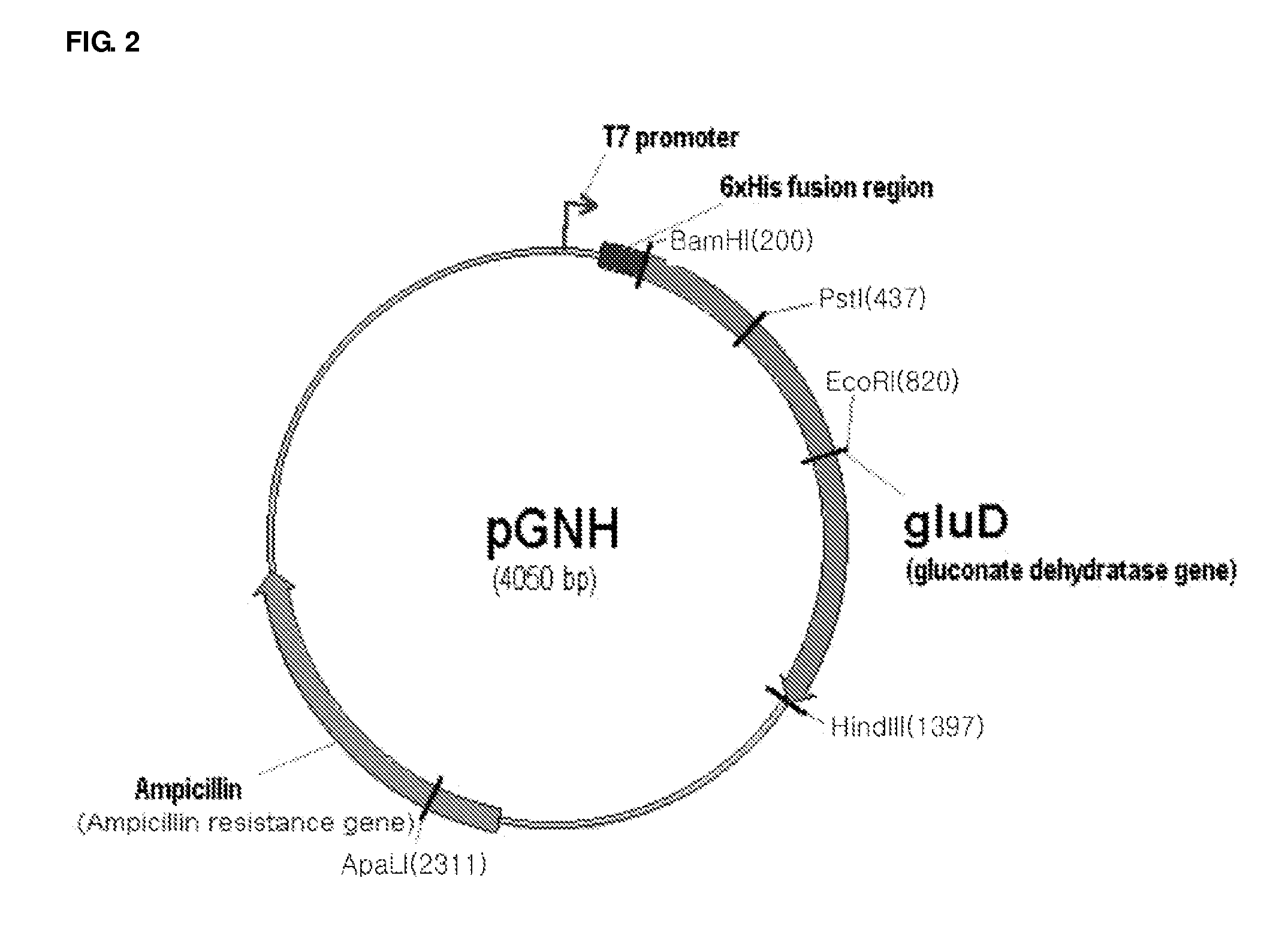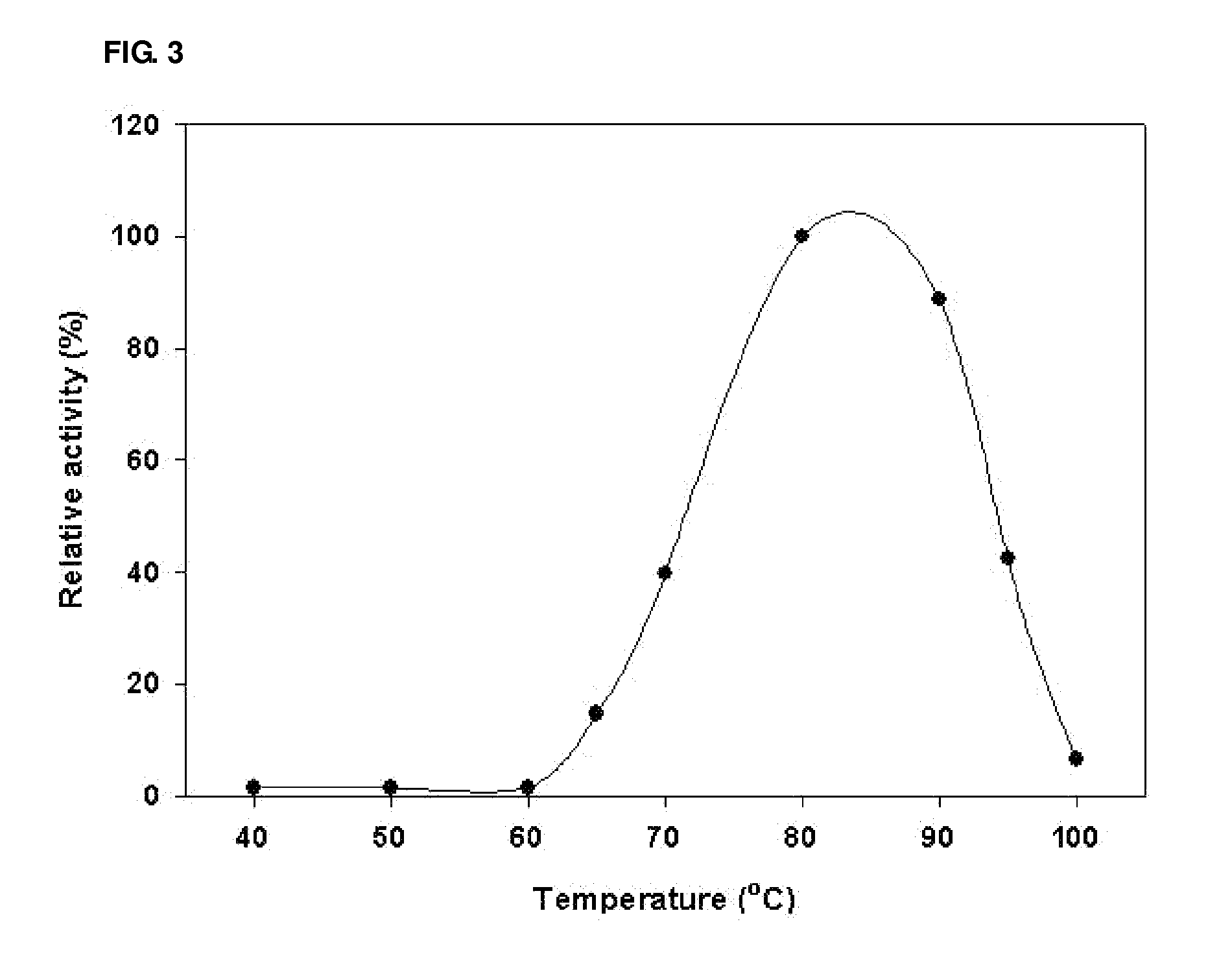Noven thermostable gluconate dehydratase and use thereof
a gluconate dehydratase and thermostable technology, applied in the direction of lyases, fermentation, biochemistry apparatus and processes, etc., can solve the problems of not maintaining thermostability of known gluconate dehydratases at temperatures, and limited knowledge of the metabolism of hyperthermophilic microorganisms
- Summary
- Abstract
- Description
- Claims
- Application Information
AI Technical Summary
Benefits of technology
Problems solved by technology
Method used
Image
Examples
example 1
Cultivating Sulfolobus solfataricus and Preparing Ss Cell Paste
[0113]The following describes how the hyperthermophilic archaeon S. solfataricus is routinely grown in a 3.7 liter fermentor for the purpose of obtaining cell mass in sufficient quantities for large scale protein purification.
[0114]For culture maintenance, S. solfataricus P2 (DSM1617) is routinely grown at 75-85° C. as a closed shaking culture at a volume of 100 ml. The organism was cultivated in the medium (per liter, 3.0 g glucose, 3.0 g yeast extract, 1.3 g (NH4)2SO4, 0.28 g KH2PO4, 0.25 g MgSO4.7H2O, 0.07 g CaCl2.H2O) containing 1 ml trace metal solution (20 mg FeCl3.H2O, 4.5 mg Na2B4O7.H2O, 1.8 mg MnCl2.H2O, 0.05 mg ZnSO4.H2O, 0.05 mg CuCl2.H2O, 0.04 mg VOSO4.H2O, 0.03 mg Na2MoO4.H2O, 0.01 mg CoSO4.H2O per liter). The final pH was adjusted to pH 3.0 with 1 M H2SO4. Cultures were grown aerobically in a 3.7-liter fermentor (KLF 2000, Bioengineering AG, Switzerland) at 78° C. while being stirred at 400 rpm. Growth was ...
example 2
Purification of Gluconate Dehydratase from Sulfolobus solfataricus
[0115]Cells of S. solfataricus (frozen wet cell weight 35 g) were harvested by centrifugal ion (5000×g, 30 min, 4° C.) and washed twice with 50 mM Tris-HCl (pH 7.2). Cell pellets were re-suspended in 50 mM Tris-HCl (pH 7.2), and disrupted by sonication for 1 h at 50% output. Crude extracts were heated at 90° C. for 20 min., and heat-denatured proteins and cell debris were removed by centrifugation (50000×g, 1 h, 4° C.). To the supernatant solution was added solid (NH4)2SO4 up to 40% saturation to recover a fraction containing the activity of gluconate dehydratase. After centrifugation (50000×g, 1 h, 4° C.), the soluble fraction was dialyzed in 50 mM Tris-HCl (pH 7.2). The homogenate was loaded onto a DEAE-Sepharose column (2.5×16 cm) previously equilibrated with 50 mM Tris-HCl, pH 7.2, and the elution was performed with a three bed volume of the same buffer, followed by a linear gradient of 0.0-1.0 M NaCl. Fractions ...
example 3
Assay of the Gluconate Dehydratase
[0117]Ss Gluconate dehydratase activity was measured by the semicarbazide method or TBA (thiobarbituric acid) assay.
[0118]The semicarbazide method was performed as follows: an enzyme reaction of a total volume a 400 μl was incubated at 78° C. in 50 mM Tris-HCl buffer, pH 7.0, with 10 mM gluconate and an enzyme solution. After 30 min, the enzyme reaction was stopped by the addition of 100 μl 2.0 M HCl. To this solution, 300 μl of semicarbazide solution (1.0% (w / v) semicarbazide hydrochloride and 1.5% (w / v) sodium acetate dissolved in distilled water) was added and incubated at 30° C. for 15 min. The final reaction mixture was diluted with 500 μl distilled water and then measured at 250 nm. The absorbance coefficient of the semicarbazone formation toward 2-keto-3-deoxy gluconate (KDG) was taken to be 0.571×103 M−1cm−1.
[0119]TBA assay was performed as follows: the reaction mixtures of 50 μl were oxidized by 125 μl of 25 mM periodic acid in 0.25 M H2SO4...
PUM
| Property | Measurement | Unit |
|---|---|---|
| pH | aaaaa | aaaaa |
| temperature | aaaaa | aaaaa |
| temperature | aaaaa | aaaaa |
Abstract
Description
Claims
Application Information
 Login to View More
Login to View More - R&D
- Intellectual Property
- Life Sciences
- Materials
- Tech Scout
- Unparalleled Data Quality
- Higher Quality Content
- 60% Fewer Hallucinations
Browse by: Latest US Patents, China's latest patents, Technical Efficacy Thesaurus, Application Domain, Technology Topic, Popular Technical Reports.
© 2025 PatSnap. All rights reserved.Legal|Privacy policy|Modern Slavery Act Transparency Statement|Sitemap|About US| Contact US: help@patsnap.com



